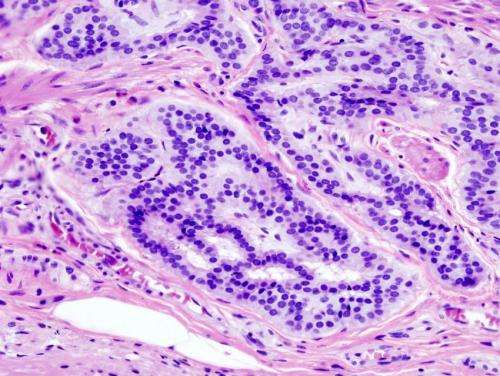Colorectal cancer burden shifting to younger individuals

The burden of colorectal cancer is swiftly shifting to younger individuals as incidence increases in young adults and declines in older age groups, according to the latest edition of Colorectal Cancer Statistics 2020, a publication of the American Cancer Society. A sign of the shift: the median age of diagnosis has dropped from age 72 in the late 1980s to 66 during 2015-2016; in other words, half of all new diagnoses are now in people 66 or younger.
Colorectal cancer (CRC) is the third most commonly diagnosed cancer and the third leading cause of cancer death in both men and women in the United States. Rapid declines in CRC incidence occurred in people 50 and older during the 2000s, largely because of increased screening with colonoscopy, which can prevent cancer by removing premalignant polyps.
In recent years, however, declines in incidence have been confined to people 65 and older, among whom rates dropped by 3.3% per year from 2011 through 2016. Among those 50 to 64, declines in incidence of 2% to 3% per year during the 2000s have reversed in recent years, with rates increasing by 1.0% per year during 2011 through 2016. This is similar to the uptick occurring in people under 50, in whom incidence rates have been increasing since the mid-1990s and rose by 2.2% per year from 2011 to 2016. These increases likely reflect elevated disease risk in generations born since 1950 that is being carried forward over time as people age, a phenomenon referred to as a birth cohort effect.
Although rising incidence in those under 50 was previously driven by rectal tumors, in the most recent five years of data (2012-2016), incidence rates rose by 1.8% per year for tumors in the proximal and distal colon as well as in the rectum. Rising incidence in people younger than 65 is driven by trends in non-Hispanic whites, although rates in American Indians/Alaska Natives are also increasing steeply.
In 2020, there will be about 18,000 cases of CRC (12%) diagnosed in people under 50 in 2020, the equivalent of 49 new cases per day. In addition, 3,640 CRC deaths (10 per day) are expected in 2020 in this age group, partly owing to delays in diagnosis; 1 in 4 patients (26%) younger than 50 is diagnosed with metastatic disease compared to 19% of those 65 and older.
CRC death rates overall have been decreasing since the late 1940s in women, but only since 1980 in men, likely reflecting differences in incidence trends, which are unavailable prior to 1975. However, incidence and mortality trends have been very similar between the sexes over the past three decades.
Like incidence, CRC mortality patterns vary by age, with rapid decreases in the oldest age groups and increasing trends in young adults. Over the past 10 data years (2008-2017), death rates declined by 3% per year in people 65 years and older but by only 0.6% per year in people 50 to 64, while increasing by 1.3% per year in those under 50. The uptick in CRC death rates in adults under 50, which is most rapid among non-Hispanic whites (2% per year), began around 2004 and was preceded by declines of 1% to 2% per year since at least 1975. Rapid declines in overall CRC death rates of approximately 3% per year during the 2000s decelerated to 1.8% per year from 2012 to 2017, perhaps reflecting slower gains in screening uptake and lower rates of first-time testing, as well as rising trends in younger adults.
Wide differences in the prevalence of CRC risk factors, such as smoking and excess body weight, as well as access to high-quality health care, including screening, result in large disparities. The incidence rate during 2012-2016 ranged from a low of 30 per 100,000 among Asian/Pacific Islanders to 46 per 100,000 among blacks and 89 per 100,000 Alaska Natives.
The pattern for mortality is the same, although the magnitude of the disparity is twice as large as that for incidence. For example, CRC incidence rates are about 20% higher in blacks (46 per 100,000) than in non-Hispanic whites (39 per 100,000) whereas death rates are almost 40% higher in blacks (19 versus 14 per 100,000). Even more striking are death rates among Alaska Natives (40 per 100,000), which are double those among blacks. American Indians/Alaska Natives are the only racial group in which overall CRC death rates are not declining.
Of all racial/ethnic groups, black patients are the most likely to be diagnosed with distant-stage CRC (25% vs 20% of non-Hispanic whites and Asians/Pacific Islanders) and also have the lowest overall 5-year survival rate (60% vs 66% among non-Hispanic whites and 68% among Asians/Pacific Islanders). These disparities are largely driven by socioeconomic inequalities that result in differences in access to early detection and the receipt of timely, high quality treatment.
Two-thirds (66%) of individuals 50 and older were current for colorectal cancer screening in 2018, ranging from 58% in Puerto Rico and 60% in Wyoming to 76% in Massachusetts. However, less than half of people ages 50-54 years were up-to-date, which is particularly concerning given increasing CRC incidence and mortality in this age group. Screening is also low among immigrants in the U.S. less than 10 years (26%), people who are uninsured (30%) or Medicaid-insured (53%), and Asian Americans (55%).
“Although overall colorectal cancer incidence and mortality continue to decline, this progress is increasingly confined to older age groups and is marred by vast disparities,” said Rebecca Siegel, MPH, lead author of the report. “Unfortunately, tools that are very effective at reducing the burden of this disease are not being fully utilized. One in three people 50 and older is not up-to-date on screening; many of them have never been screened at all. We could save countless lives by increasing access to screening in rural and other low-income areas, especially in Alaska, and incentivizing primary care clinicians to ensure that all patients 45 and older are screened, as well as facilitating healthier lifestyles in our communities.
Source: Read Full Article


